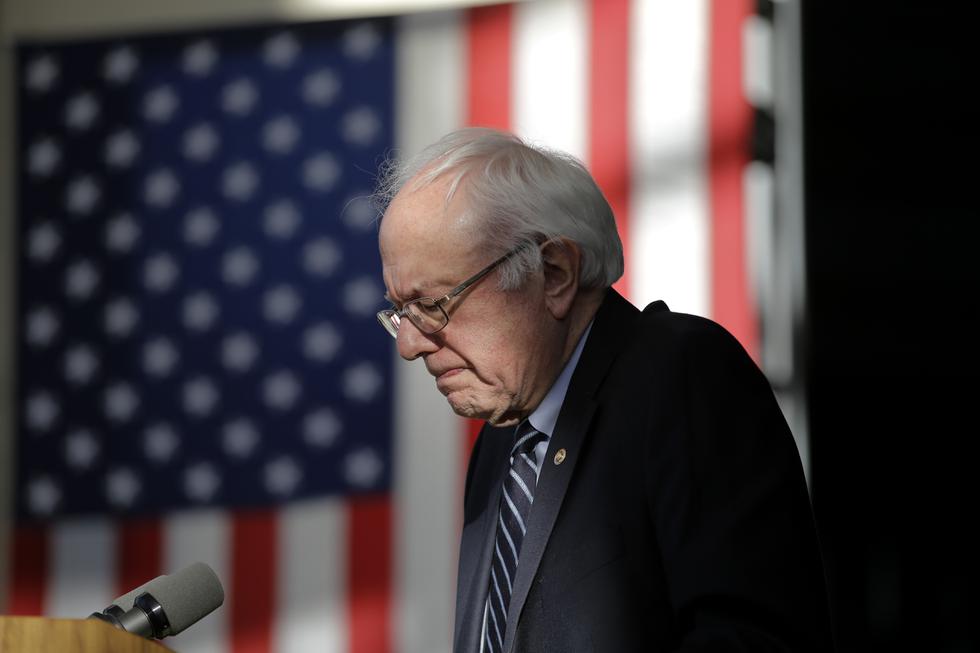
In order to win the Democratic nomination for the presidency, you have to amass 2,382 of the 4,763 delegates who will attend the party's convention in July. The three contests that have taken place in Iowa, New Hampshire, and Nevada have allotted only 118 of those delegates, or 2 percent. And yet to listen to journalists, pundits, and analysts, the end of the Democratic race is in sight. If Hillary Clinton succeeds in beating Bernie Sanders in South Carolina this coming Saturday, they will declare that she has delivered a crushing blow, leaving him face-down on the canvas, his vision doubled and ears ringing as his weakened arms struggle to raise him up for Super Tuesday, when the final, gruesome pummeling will be administered.
If that's what they say, will it be unfair? You bet. There's still a long way to go, most Democrats haven't voted, and South Carolina won't change that no matter what happens. But Sanders doesn't have a lot of time to prove that his already remarkable campaign more resembles Barack Obama's in 2008 than Howard Dean's in 2004.
No analogy is perfect, but those are roughly the two paths facing Sanders: an extraordinary run that challenges conventional wisdom and the political establishment, confounding expectations by bringing in huge numbers of small donors, and exciting young people to get involved in politics for the first time, and then wins; or a campaign that does all those things, and then loses.
On Sunday, the day after Clinton won the Nevada caucuses, Sanders was candid about why he fell short. Here's what he told Chuck Todd on Meet the Press:
Well, what happened is over the last five weeks, Chuck, we came from 25 points down to five points down. As I understand it, we actually won the Latino vote yesterday, which is a big breakthrough for us. But the voter turnout was not as high as I had wanted. And what I've said over and over again, we will do well when young people, when working-class people come out. We do not do well when the voter turnout is not large. We did not do as good a job as I had wanted to bring out a large turnout. …
Again, I wish we had had a larger voter turnout. But by the way, we did phenomenally well with young people. I think we did well with working-class people. But remember, we were taking on a candidate who ran in 2008. She knew Nevada a lot better than we did, she had the names of a lot of her supporters. So I am proud of the campaign that we ran. Obviously, I wish we could have done a little bit better. But at the end of the day, I think she gets 19 delegates, we get 15 delegates, we move onto the next state.
Sanders is right: The Democratic Party in Nevada is estimating the turnout for the caucuses at around 80,000. In 2008, the last contested caucuses, just under 120,000 Nevadans turned out. In other words, turnout was down by about a third.
Caucuses are, of course, ridiculous and anti-democratic. They make voting even harder than it is in primaries, so rather than expressing the will of the voters, they express the will of a relatively small group of highly motivated voters who happen to be willing and able to attend a long meeting in order to state their preference. While 80,000 Democrats attended the caucuses, 530,000 Nevadans voted for Barack Obama in 2012. If the number voting for the Democratic candidate this November turns out to be in the same neighborhood, it would mean that only one in six or seven Democratic voters actually participated in the event to choose that candidate.
And it's true that for many people inclined to vote for Sanders, like young people, caucusing may be particularly difficult. That's a big part of the reason that Hillary Clinton was able to win the Iowa caucuses by a hair: The older people and frequent voters who were more likely to support her were more likely to caucus.
But in Iowa, turnout was down, too. Around 171,000 Iowa Democrats caucused this year, but in 2008, that number was 236,000, meaning it dropped by 27 percent. And in New Hampshire, which Sanders won easily, turnout this year was just over 250,000; in 2008 it exceeded 288,000. That's a smaller decline (13 percent), but still a decline.
You might say that it's a high standard-after all, 2008 was an unusual campaign, one that got Democratic voters energized in ways they had never been before. And that's true. The problem for Sanders is that he needs to duplicate that excitement in order to win. His campaign is predicated not just on doing well with young voters or new voters or any other kind of voters. It's predicated on expanding the electorate, both in the primaries and in the general election, so much that he overcomes the advantages more traditional politicians have.
More so than Obama or even Dean, Sanders is counting on a revolution, not only to help him defeat a primary opponent who has more of the traditional advantages of an establishment favorite, but also to govern once he wins the White House. When Sanders is challenged on how he'll be able to push his ambitious policy plans through a recalcitrant Congress, he responds that he will lead a powerful uprising of the citizenry that will force politicians to accept change. So far though, the uprising looks pretty limited.
Sanders has already accomplished something remarkable. The fact that a frumpy 74-year-old democratic socialist from Vermont has turned what was supposed to be a walk in the park for Hillary Clinton into a genuinely competitive race is positively historic. But unless he really can expand the electorate, it may not be enough.



